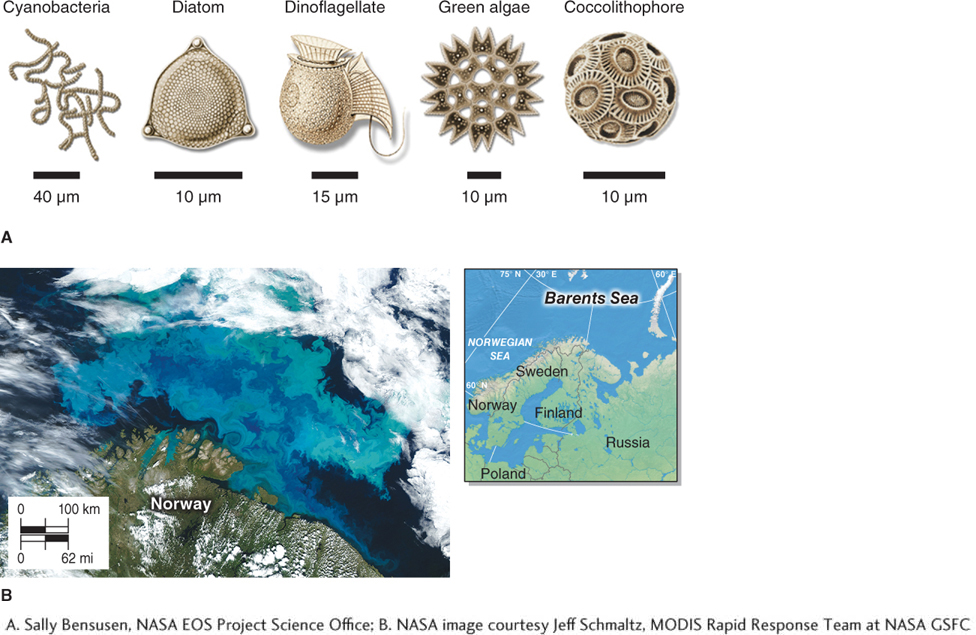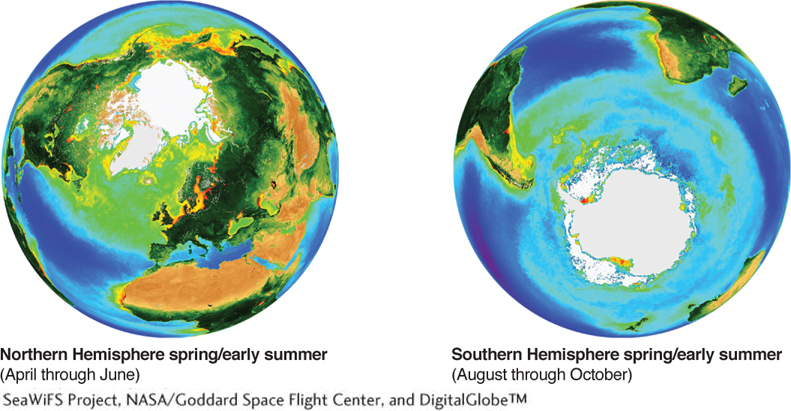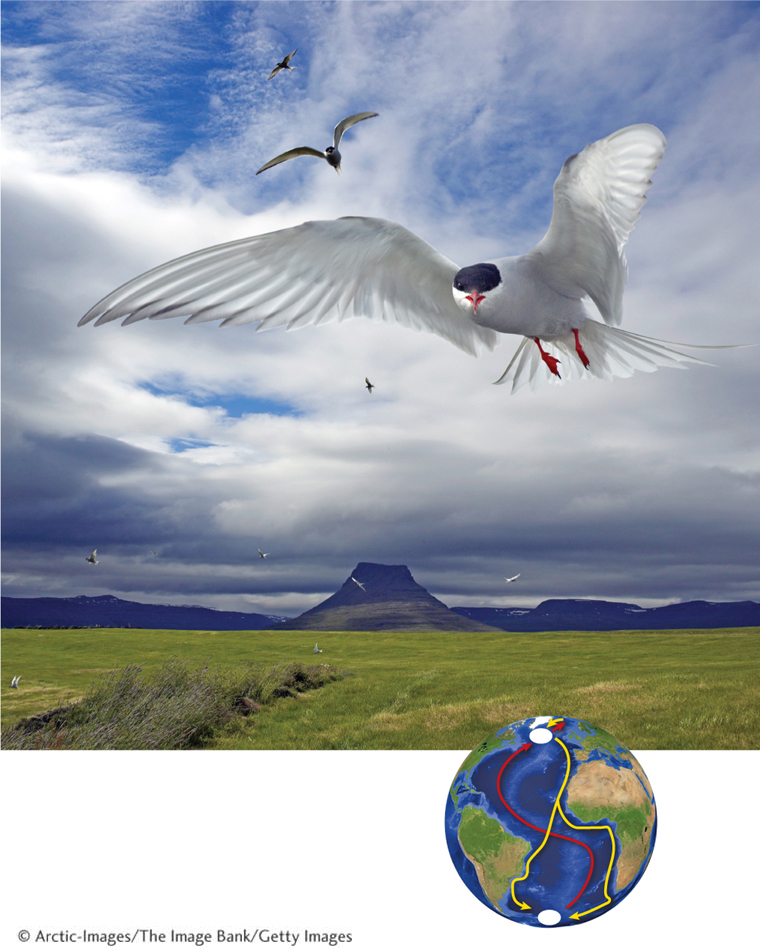10.3 Life in Polar Waters
Explain how polar marine ecosystems function.
All the marine ecosystems that we have described up to this point are close to shore and are heavily influenced by human activities. The polar waters are close to the edges of the continents as well, but far fewer people live near them and influence them. Compared with other continental margin environments, polar waters have remained relatively little affected by human activity.
The Importance of Phytoplankton
At the base of the food web in the polar oceans are microscopic photosynthetic algae and other micro-

Marine ecosystems rely on phytoplankton to convert solar energy to the chemical energy that all other marine organisms require. (Hydrothermal and geothermal vent ecosystems are the exception, as we will see in Section 10.4.) The key to primary productivity in ocean water is upwelling: the circulation of water from the seafloor to the ocean surface. Upwelling brings nutrients from the seafloor sediments to the sunlit epipelagic zone where phytoplankton reside. The more upwelling that occurs, the better the phytoplankton will be fertilized and grow, and the more productive the ecosystem will be.
upwelling
The circulation of nutrient-
Phytoplankton in Polar Waters
Polar waters are not thermally layered, meaning that the surface water is as cold as the water at depth (see Figure 10.5). As a result, deep, nutrient-

Compared with polar terrestrial ecosystems, polar marine ecosystems can respond rapidly to spring warming because phytoplankton, with a life span of a few days, grow as soon as temperature and light levels are suitable. Land plants at high latitudes, however, must wait for the snow to melt and ground temperatures to increase. Thus, there is far less available energy in polar terrestrial ecosystems and far less biomass on land. Antarctica, for instance, is barren and has little biomass, while the seas just offshore are teeming with life supported by phytoplankton blooms.
Many migratory birds, as well as mammals such as whales, make their way to the high latitudes each summer to gorge on the brief but bountiful productivity of the polar waters. During the dark polar winter, phytoplankton activity shuts down, and many species migrate to more productive latitudes. Picture This discusses the migration of the Arctic tern in the context of polar marine productivity.
Picture This

Arctic Tern Migration
The Arctic tern (Sterna paradisaea) is one of the greatest long-
Tracking of Arctic terns has shown that they fly along routes that roughly skirt the edges of the continents, rather than in straight lines (inset map). Thus, these birds commonly travel some 80,000 km (50,000 mi) or more each year. During this journey, the birds may rest on land only once a year, while nesting. Arctic terns feed, mate, and even sleep while flying. Since this remarkable bird lives about 30 years, it can travel as much as 2.4 million km (1.5 million mi) during its lifetime.
Consider This
Question 10.7
List the costs and benefits of long-
distance migration such as that of the Arctic tern. Question 10.8
If there were strong upwelling in tropical waters, do you think the Arctic tern would migrate such a long distance? Explain.